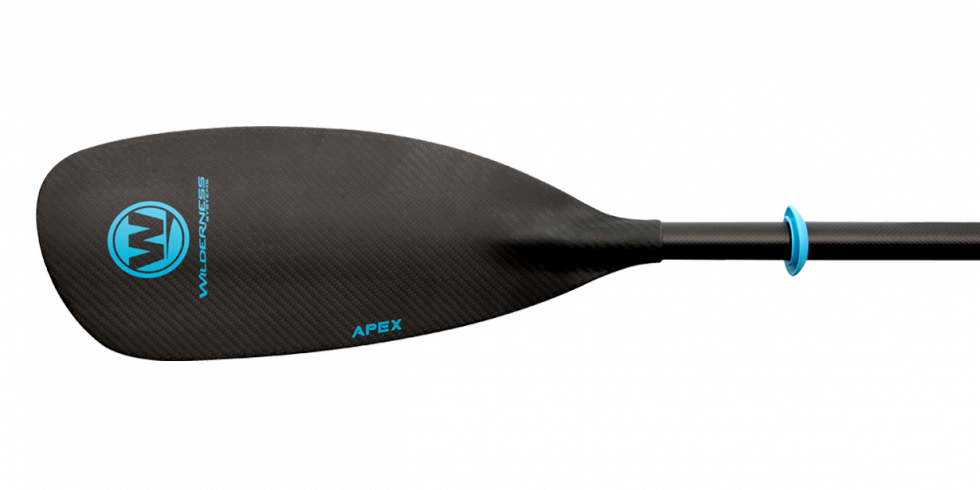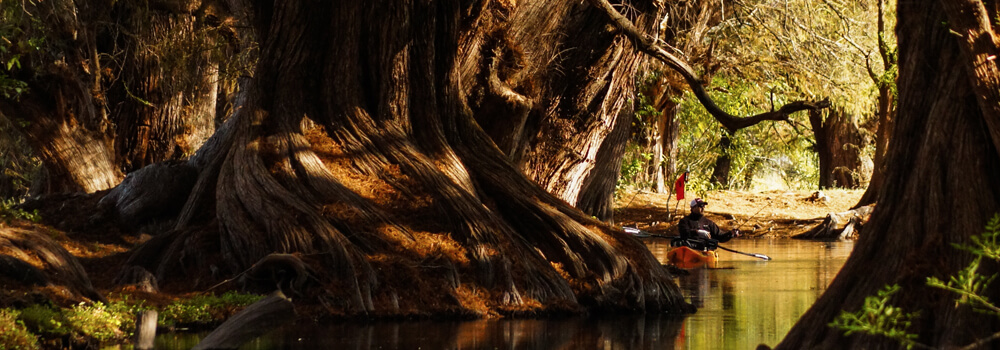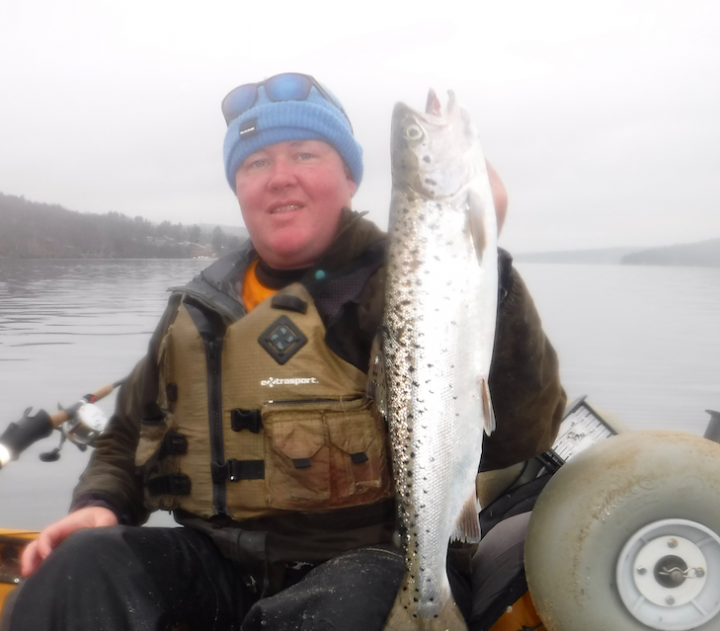
Apex Carbon (2 Sizes)
The Apex Rec/Touring Carbon paddle weights just 27 oz and is the lightest option in the Apex series.
Learn More
The Apex Rec/Touring Carbon paddle weights just 27 oz and is the lightest option in the Apex series.
Learn MoreJoin the Wilderness Systems Email Community
Be the first to know about new products, team news and events.



Kayak fishing in the Northeast? This article has strategy you'll probably want to try.
1. Ice Pack Salmon – This may be the first pattern for the kayak angler to try, as fishing is often excellent prior to full ice out, as the ice recedes from the shoreline to the middle of the lake. Trolling with small, smelt-imitating spoons will be the best option, and the precision of the rudder system in the Radar 135 will provide the peddle powered kayak angler with the ability to follow the contours of the receding ice with precision. The Helix drive will also allow the angler to readily find the right speed to induce these aggressive salmon to bite. A GPS unit will allow you to control your speed and look for speeds of 2.0 – 2.5 knots to achieve best results with faster speeds being better as the water warms. Surface temps are usually too cold for flat-line trolling so look to mid-water depths where the water is warmer using lead core.
2. Pre-Spawn Nighttime Walleyes. If you can deal with some cold weather, and focus your efforts on wind free nights, the early season walleye bite can be hot. Even before ice-out, male walleyes start moving from their deep-water wintering locations to extremely shallow water areas in anticipation of the spawn. Nighttime is the right time for this bite and best results will be achieved for the first two to three hours after dusk when the water temps are at their warmest. As the days get progressively warmer, this bite will get constantly improve on a daily basis as the water warms and usually peaks at water temperatures of about 48 degrees, just prior to the full-out spawn. Although you won’t catch many trophies during this bite, you will catch plenty of “spike” males in the 17” – 22” range. Trolling is the best option for locating fish. The best trolling lures are the Rapala Tail Dancer, Rapala Shallow Shad Rap, and Reef Runners. These walleyes will congregate in water as shallow as 2’ so focus your efforts in the 4’ to 8’ range and troll slowly at approximately 1.5 – 1.7 knots. Again, the precision of the rudder system on the Radar 135 will allow to work these depth contour lines with the greatest accuracy. The ease of the Helix drive will allow to control your speed with little effort.
3. Jigging Lake Trout. Lakers actively feed year round if you can find the right depth. In the early spring, focus your efforts on the first plateaus after steep drop-offs from shoreline flats. Try to find rocky bottoms or boulder fields on nautical charts for best results. For this reason, a charts component on your GPS is highly useful. Start fishing at 70’ and go as deep as 120’. If you hit a fish, mark it as a way point and continue to work it for multiple lakers. The ease of reverse in the Helix drive will greatly help in hedging the early season winds and allow you to hold your position over packs of lake trout. Hogy Heavy Metal Jigs and Epoxy Jigs in the 1 ounce to 2 ounce range will greatly assist you in holding bottom in deep water are great producers for lake trout year round.
4. River Holdover Stripers. A large portion of the striper population in the northeast spend their winter in coastal rivers along the east coast with well-known rivers producing wintering stripers from Massachusetts to New Jersey and beyond. Your best bet for locating these stripers is in the larger, deeper rivers and you will find them in huge, tightly packed schools so a good sonar unit is a must. Although the action is slower than the early winter, the late-winter bite can still produce a good pick of schoolie stripers in the 18” – 24” range with occasional legal sized bass in the mix. Soft plastics work best and Skinny Hogys are a great producer. The Radar 135 gives you the advantage of standing and casting at these holdovers, which gives you more leverage and allows for more movement in the action of your presentation.
5. Bass, pickerel, and panfish. In shallow lakes, the water will warm quickly and short bursts of warm weather will get largemouth bass, pickerel, and panfish into feeding mode in fairly short order. Panfish and bass will congregate together in schools in early spring, usually near structure, so if you find these fish, work the area for a little while and you may be able to catch multiple fish. Jerking crakbaits and jerkbaits can produce great early spring results from the kayak for largemouth bass and panfish. Pickerel will usually be more spread out so a searching pattern with #3 inline spinners is a great way to locate these fish, which can often be highly aggressive in the early spring. Moving along mid-lake flats is the best place to look for early season pickerel in shallow lakes. During times of snow melt, move away from the shoreline and towards deeper water flats and troll shallow running plugs. Look to troll deeper waters in shallow lakes from 5’ to 8’. If the fishing is really slow, and there is snow melt, try slow-trolling the deeper waters at speeds of around 1.2 knots to 1.7 knots. Smaller sized Rapala Husky Jerks will produce well for the troll.